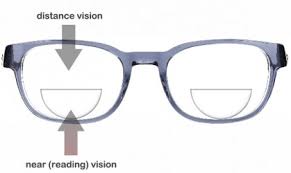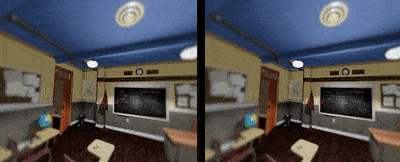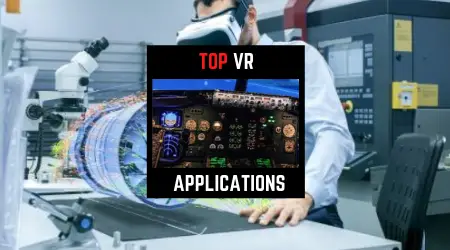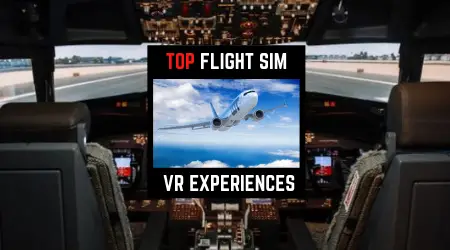A user with poor eyesight will continue to wear prescription lenses inside a VR goggle in order to see clearly as much as the VR resolution can provide.
VR headsets still work for users wearing bifocals, but it's unnecessary because current headsets technology don't simulate depth of field, so it can be frustrating to see something blurry when scanning up or down.

The challenge for bifocals for VR applications is its two different prescriptions:
- Near vision
- Far vision
This means they need separate lenses for both eyes. Even then it will be useless inside a VR headset without depth of field capability.
Current VR headset technology like the Oculus Quest 2 doesn't feature depth of field, so the human eye wouldn't be about to see the difference in VR. It's just a flat image. It's recommended to just wear a pair of non-progressive lenses inside a VR headset.
VR Headset Prescription Lenses
Wearing glasses inside a tight fitting VR goggle can be frustrating. Therefore we recommend you checking out some corrected lens insert so you can lose the glasses.
We recommend the Reloptix for HTC VIVE, Oculus Quest, Oculus Rift S, Oculus GO, and HP REVERB G2. Simply just put them on for people who need it, then take it off when passing it to someone with 20/20 vision.
There are other brands out there, and you can check out our VR prescription lenses guide
Future VR Headset Involving Depth Of Field

There are a few companies out there actively developing depth of field capabilities for modern VR headsets. It will allow the user to shift focus from close-up to long-distance with an immersive dynamic focus.
Another technology is foveated rendering where the VR image will only sharpen based on where the eye is looking to simulate visual depth. This method also reduces graphics computing power and only allocates it to points of focus.
Read more about foveated rendering


